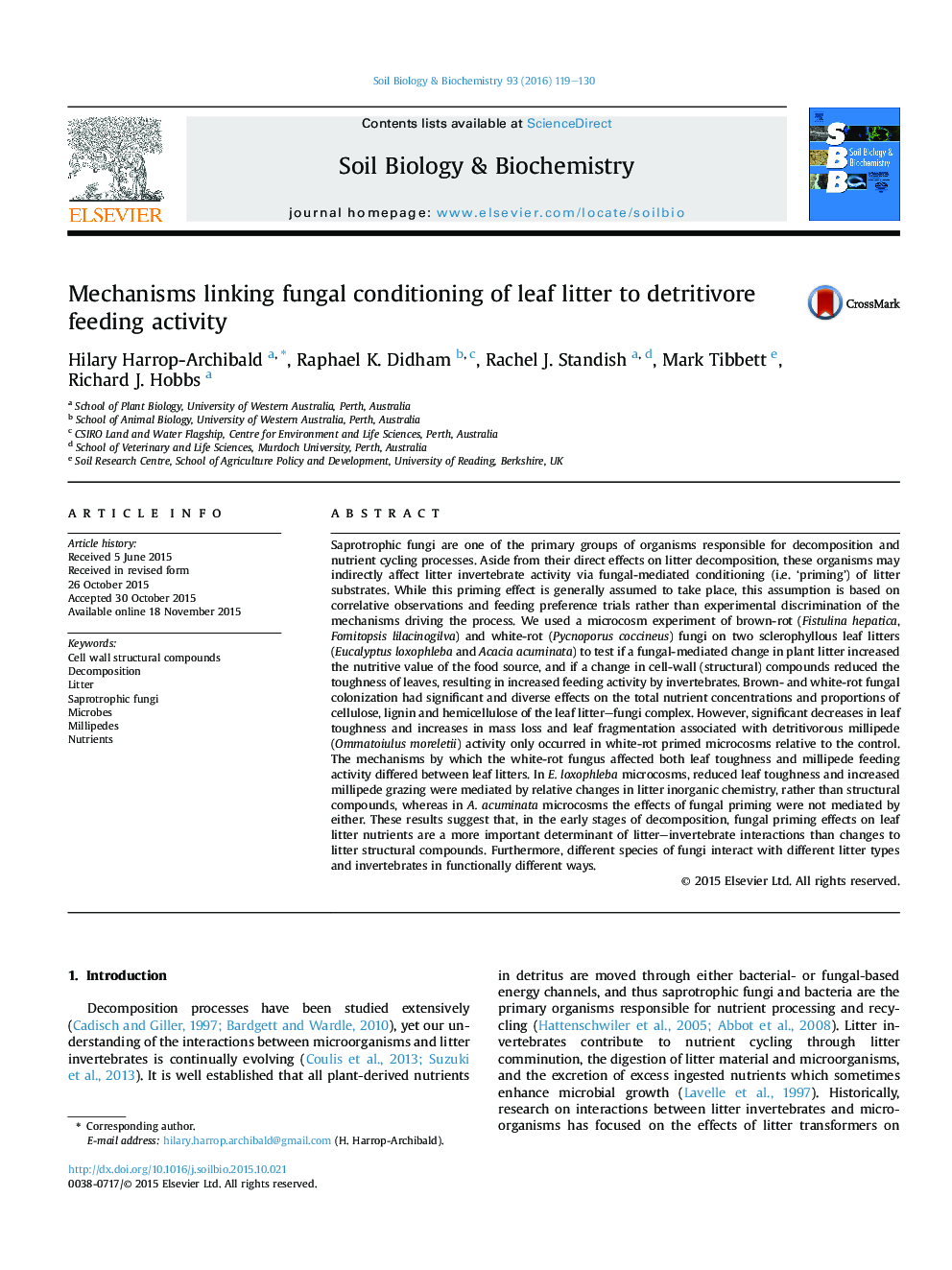| کد مقاله | کد نشریه | سال انتشار | مقاله انگلیسی | نسخه تمام متن |
|---|---|---|---|---|
| 2024251 | 1542591 | 2016 | 12 صفحه PDF | دانلود رایگان |
• Fungi affected leaf chemical and structural properties of the fungus–litter complex.
• Changes in nutritive value not leaf strength, drive arthropod consumption of litter.
• Fungal functional diversity mediates decomposer activity.
Saprotrophic fungi are one of the primary groups of organisms responsible for decomposition and nutrient cycling processes. Aside from their direct effects on litter decomposition, these organisms may indirectly affect litter invertebrate activity via fungal-mediated conditioning (i.e. ‘priming’) of litter substrates. While this priming effect is generally assumed to take place, this assumption is based on correlative observations and feeding preference trials rather than experimental discrimination of the mechanisms driving the process. We used a microcosm experiment of brown-rot (Fistulina hepatica, Fomitopsis lilacinogilva) and white-rot (Pycnoporus coccineus) fungi on two sclerophyllous leaf litters (Eucalyptus loxophleba and Acacia acuminata) to test if a fungal-mediated change in plant litter increased the nutritive value of the food source, and if a change in cell-wall (structural) compounds reduced the toughness of leaves, resulting in increased feeding activity by invertebrates. Brown- and white-rot fungal colonization had significant and diverse effects on the total nutrient concentrations and proportions of cellulose, lignin and hemicellulose of the leaf litter–fungi complex. However, significant decreases in leaf toughness and increases in mass loss and leaf fragmentation associated with detritivorous millipede (Ommatoiulus moreletii) activity only occurred in white-rot primed microcosms relative to the control. The mechanisms by which the white-rot fungus affected both leaf toughness and millipede feeding activity differed between leaf litters. In E. loxophleba microcosms, reduced leaf toughness and increased millipede grazing were mediated by relative changes in litter inorganic chemistry, rather than structural compounds, whereas in A. acuminata microcosms the effects of fungal priming were not mediated by either. These results suggest that, in the early stages of decomposition, fungal priming effects on leaf litter nutrients are a more important determinant of litter–invertebrate interactions than changes to litter structural compounds. Furthermore, different species of fungi interact with different litter types and invertebrates in functionally different ways.
Journal: Soil Biology and Biochemistry - Volume 93, February 2016, Pages 119–130
